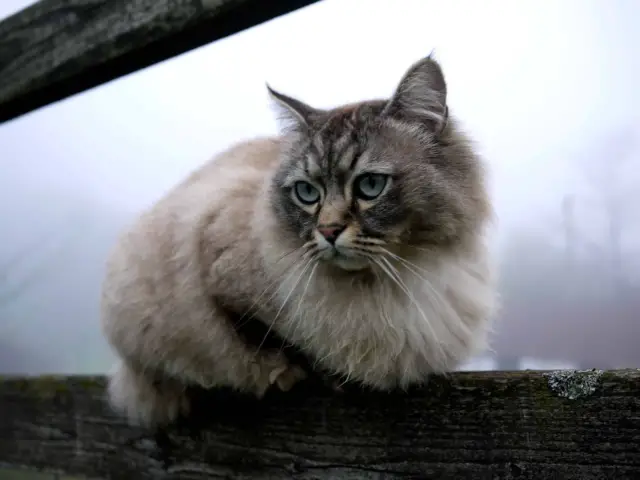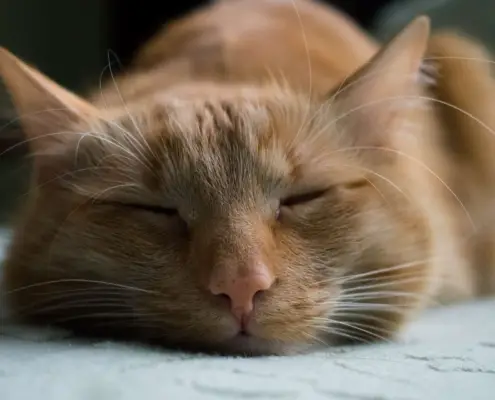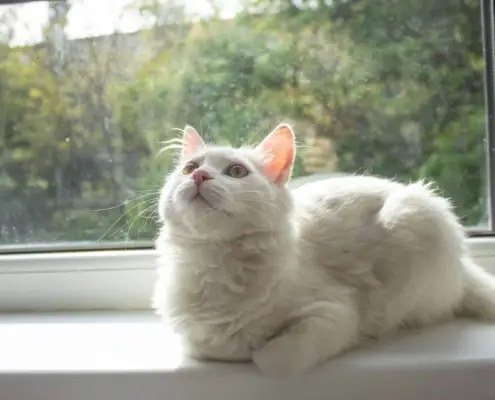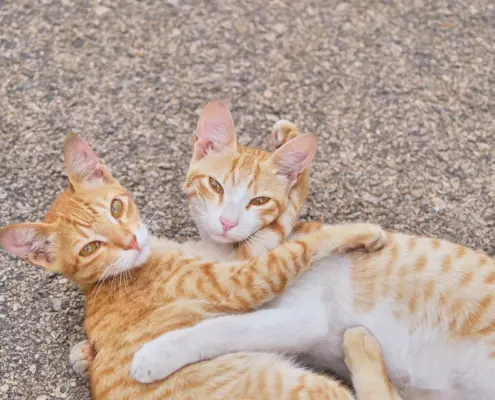Cats have always been known for their independent nature. Unlike dogs, who often seek constant attention and affection, cats are renowned for their ability to navigate the world on their own terms. This unique characteristic has fascinated cat owners and researchers alike, prompting a deeper exploration into the psychology behind cats’ desire for autonomy.

The evolution of domestic cats and their instinctual behaviors
To understand why cats crave independence, it is essential to delve into their evolutionary history. Domestic cats, descendants of the African wildcat, were initially attracted to human settlements due to the abundance of prey attracted by agricultural activities. Over time, they developed a symbiotic relationship with humans, becoming semi-domesticated.
Despite this association with humans, cats retain many of their wild instincts. Hunting, marking territory, and maintaining a sense of control over their environment are deeply ingrained behaviors that have been passed down through generations. These instincts contribute to their independent nature.
Understanding the psychology behind cats’ desire for autonomy
Cats’ desire for autonomy stems from their innate need for control and a strong sense of self. Unlike humans, who rely on social interactions for a sense of identity, cats find their identity in their ability to navigate the world independently. This independence allows them to assert their control over their environment and express their natural behaviors without interference.
Furthermore, cats possess a highly developed sense of territory. They view their living space as their domain, and maintaining control over this territory is crucial for their psychological well-being. By being independent, cats can establish and defend their territory, ensuring their safety and security.
Factors that contribute to cats’ independence
Several factors influence cats’ independence. One significant factor is their solitary hunting nature. Unlike pack animals, cats are solitary hunters by nature, relying on their individual skills to capture prey. This solitary hunting behavior translates into their daily lives, where they prefer to explore their surroundings and engage in activities without relying on others.
Another factor contributing to cats’ independence is their sensitivity to overstimulation. Cats are highly perceptive creatures and can easily become overwhelmed by excessive stimuli. To protect themselves from overstimulation, they often seek solitude and retreat to a quiet space where they can regain control and recharge.
The benefits of an independent cat
Having an independent cat can be a rewarding experience for both the cat and its owner. Independent cats are often self-reliant and require less attention and constant interaction compared to more dependent pets. This independence allows owners to maintain their own busy lifestyles without feeling guilty about leaving their feline companion alone for extended periods.
Moreover, independent cats tend to be more self-assured and confident in their abilities. They have a strong sense of identity and are less prone to anxiety and behavioral issues. This self-assuredness often translates into a well-adjusted and contented cat that can adapt more easily to changes in their environment.
How to foster independence in your cat
While cats naturally possess an inclination towards independence, there are ways to foster and encourage this behavior further. Providing your cat with a safe and stimulating environment is crucial. This can include providing areas for climbing and exploring, interactive toys, and access to windows where they can observe the outside world.
Additionally, allowing your cat to make choices and decisions in their daily lives can contribute to their sense of autonomy. Providing multiple feeding stations, different types of bedding, and various hiding spots can give your cat the freedom to choose what suits them best.
Common misconceptions about independent cats
There are several misconceptions surrounding independent cats. One common belief is that they are aloof or unaffectionate. While it is true that independent cats may not seek constant attention, they can form deep bonds with their owners and show affection in their own unique ways. Understanding and respecting their need for personal space is crucial in building a strong bond with an independent cat.
Another misconception is that independent cats are not trainable. While they may not be as eager to please as dogs, cats are highly intelligent animals and can be trained using positive reinforcement techniques. By providing rewards and incentives, you can motivate your cat to learn new behaviors and commands.
The importance of providing a balance between independence and companionship
While independence is an integral part of a cat’s nature, it is equally important to provide them with companionship and social interaction. Cats, despite their independent streak, still benefit from the presence of their owners and can form strong bonds with other animals in the household.
Ensuring a balance between independence and companionship is key to a cat’s overall well-being. This can be achieved by setting aside dedicated playtime, engaging in interactive activities, and providing opportunities for socialization with other pets or people.
Tips for creating an enriching environment for your independent cat
To create an enriching environment for your independent cat, consider the following tips:
- Provide vertical spaces, such as cat trees or shelves, for climbing and observing their surroundings.
- Offer a variety of toys that stimulate their natural hunting instincts.
- Create designated hiding spots where your cat can retreat and feel secure.
- Establish a routine that includes interactive play and mental stimulation.
- Set up window perches or bird feeders to provide visual stimulation.
- Consider introducing puzzle feeders to engage your cat’s problem-solving skills.
By implementing these tips, you can create an environment that fosters your cat’s independence while ensuring they have the opportunity to engage in stimulating activities.
Embracing and celebrating the independent feline
In conclusion, the desire for independence is deeply rooted in the psychology of cats. Understanding and respecting this aspect of their nature can lead to a more fulfilling and harmonious relationship between cats and their owners. By providing a balance between independence and companionship, fostering an enriching environment, and dispelling common misconceptions, cat owners can embrace and celebrate the independent feline.
Remember, each cat is unique, and it is essential to observe and respond to your cat’s individual needs and preferences. By doing so, you can create a loving and supportive environment that allows your independent cat to thrive.
If you enjoyed my article, I would appreciate you sharing it with your network.

Sima Ndlebe
Sima writes for CatBuzz. He is interested in Cats, Health and Fitness, and Entrepreneurship.
Published: 1 March 2024



